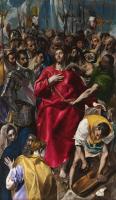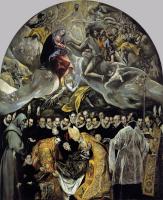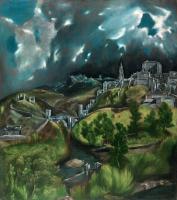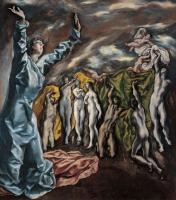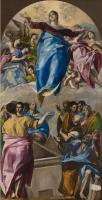El Greco
El Greco, the Greek, was the name given by the Spanish to Domḗnikos Theotokópoulos, who was born in Crete but spent most of his working life in Toledo. He was a Baroque painter, but he was influenced by both the Mannerist and the Renaissance masters. His style is very individual and easily recognizable: elongated figures, harsh surprising colours in brilliant contrasts, and an abundant use of white.
The patrons for whom he worked were taking part in a fervent religious revival, and El Greco painted mainly for churches and buildings belonging to religious orders.
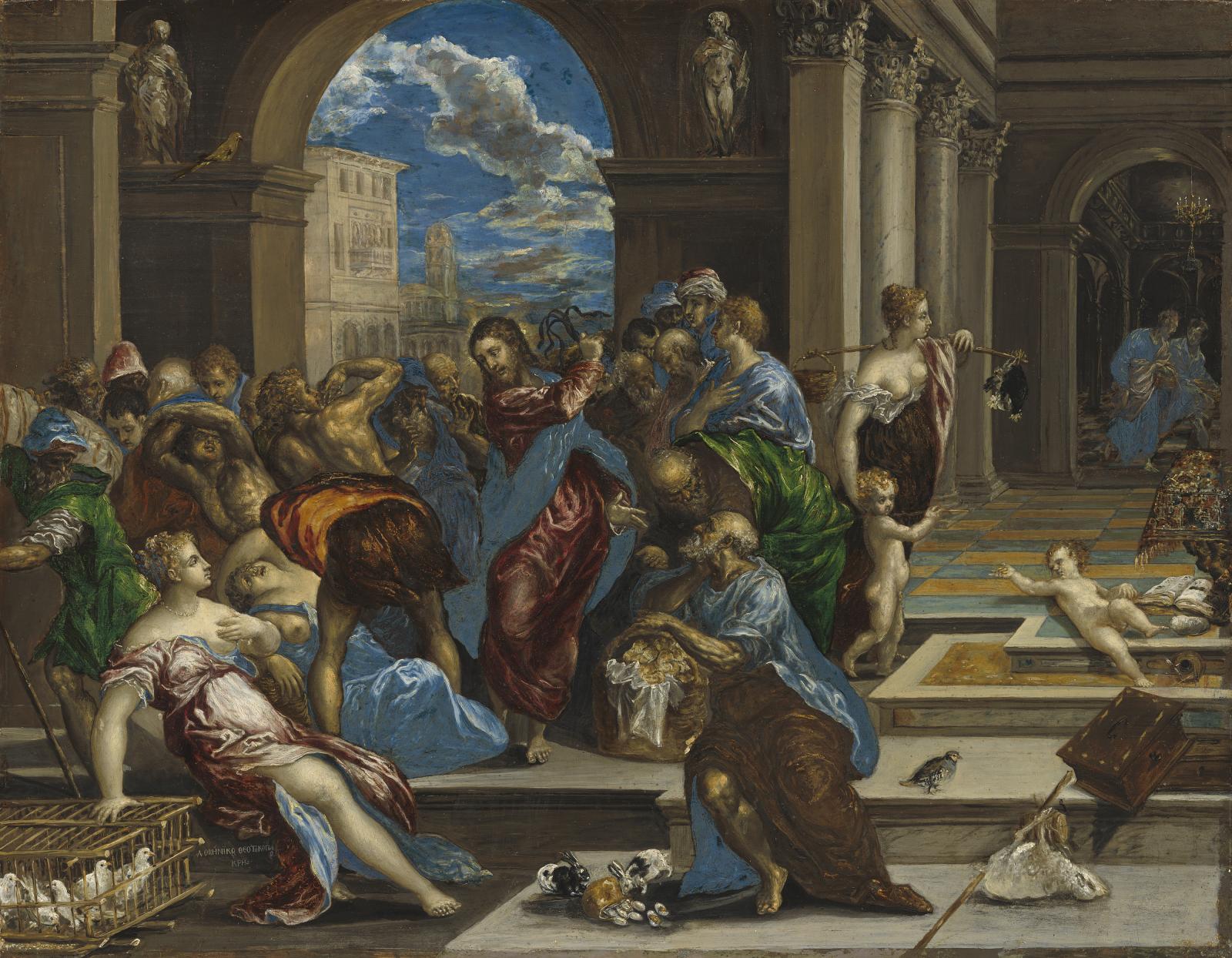 Christ Driving the Money Changers from the Temple is a subject he painted many times.
The energetic and graceful movement of Christ’s right arm, and the angle of his
elbow as he raises his whip, are pivotal parts of the entire composition. They
are echoed in the bent arm of the man to the left, and both he and the man
stretching upwards repeat the angle of Christ’s twisting central figure. A
piece of upturned furniture, possibly a trader’s stand, testifies to the vigour
with which the merchants are being urged to leave.
Christ Driving the Money Changers from the Temple is a subject he painted many times.
The energetic and graceful movement of Christ’s right arm, and the angle of his
elbow as he raises his whip, are pivotal parts of the entire composition. They
are echoed in the bent arm of the man to the left, and both he and the man
stretching upwards repeat the angle of Christ’s twisting central figure. A
piece of upturned furniture, possibly a trader’s stand, testifies to the vigour
with which the merchants are being urged to leave.
The two crowds of people are sharply separated : on the left are the traders, and on the right a group of elderly bearded Pharisees, talking among themselves. The two groups are further defined by the small reliefs on the wall. Behind the Pharisees is the sacrifice of Isaac, a symbol in the Old Testament of purification and redemption, and behind the traders is the expulsion of Adam and Eve from the Garden of Eden.
The paint is almost slapped on to the canvas, making strong, rough textures. The strident, acid colours, the streaks of white emphasizing the elongated limbs, the nervous tension and dynamism of the strange distorted figures, all express El Greco’s personal and passionate Christian beliefs.


